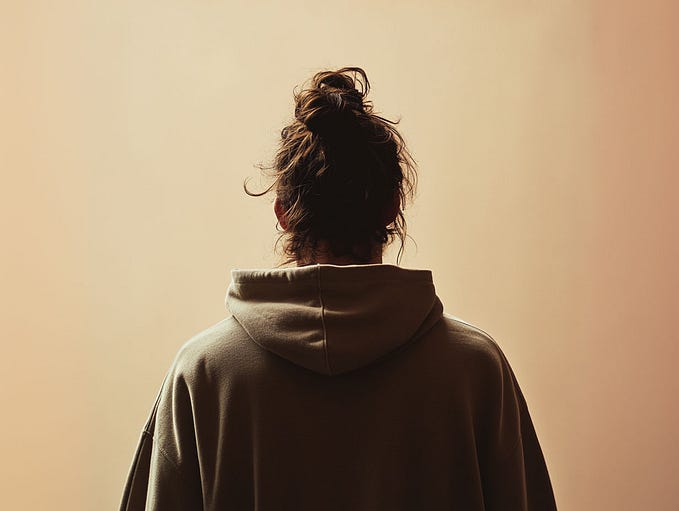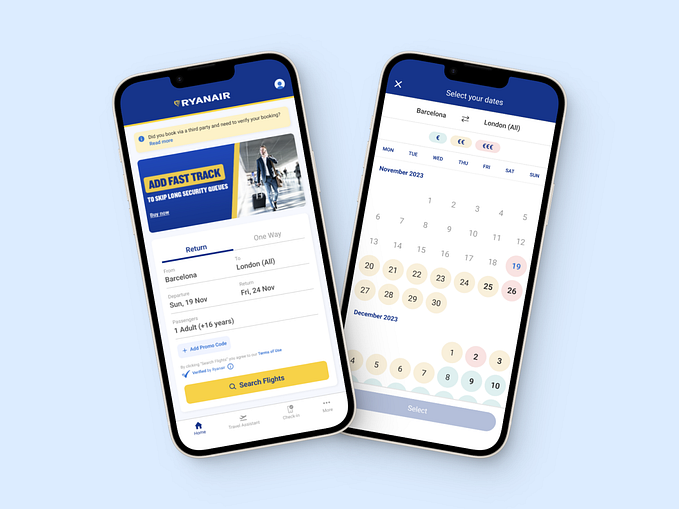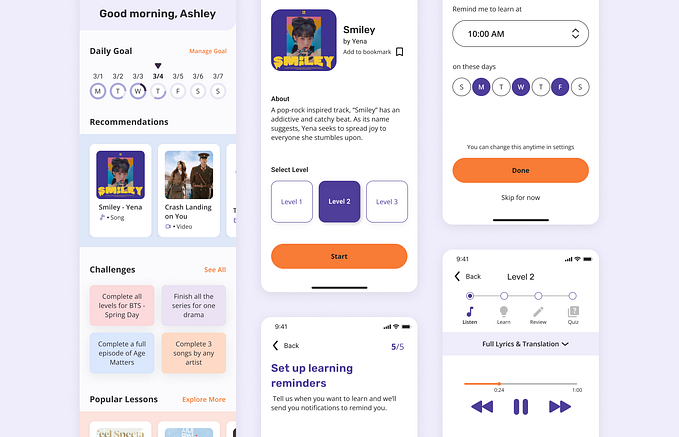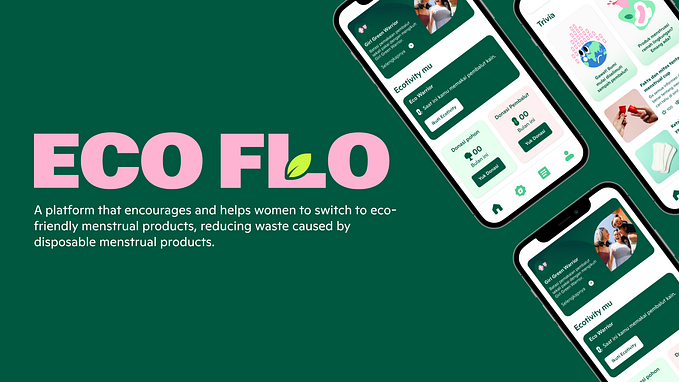Creating the perfect wallet for a friend — a UX case study
I decided to change the field I was working previously for 6 years (video editing) and switch to the UX and UI design world. I'm looking for ways to practice what I'm learning. I've published A Guerrilla Usability Test and took a Daily UI Challenge, so now I decided to take the UX Challenge!
Challenge #1: Design the perfect wallet for a friend
Design prompt: Interview a friend, try to get interesting findings from it and design the perfect wallet for this friend!
I picked my friend/husband for this exercise. He is minimalist, likes simplicity and is also very critical. I thought this could be an interesting challenge, to find out his perfect wallet!
The Process
I followed the IDEO's human-centered design thinking process mixing it with ODI Process (JTBD).

User Interview
To understand his current wallet, possible problems and get some insights, I started an interview with him. I transcripted everything, but for the sake of brevity, I'll share only some sentences I considered important.
The interview was originally in Portuguese so I translated to English.
- Do you remember what was going through your mind when you choose your wallet?
I have the impression that it came with one more part, this part that I've been using I think is the smallest one. I chose this part because it is small and can be carried in the front pocket. Also because when I used in the back pocket that fitted the bigger one, I sit on it and sometimes bend the card. I took this little one because it fits well in the front pocket. And I always bring little, I do not like having too many things on the wallet and it is easy to access the stuff.
2. What do you normally carry in it?
- 1 Credit Card
- 1 Credit/Debit Card
- 1 Health Insurance Card
- 1 Corporate Prox Card
- The money I usually carry very little. I often walk with no money.
- I use a harder cap on the Transit Pass. I do not put it inside the wallet.
Maybe it could be inside but it doesn't have space and maybe if there was space I’d need a bigger wallet so I leave it separated.

3. So is it missing something that you would carry that you can’t carry today?
It has this issue of the Health Insurance Card and the Corporate ID Card that are occupying the same slot. The Transit Pass I don't know, maybe it could fit inside.
Maybe if I didn't have to remove the Transit Pass all the time from the wallet and could use the two Transit Pass and the Corporate ID Card together in the wallet it would be useful. So I didn’t have to be carrying two things like that, just one.
4. What do you wish it could be different and which points do you like it
One thing I would like to be different is the material not being leather. I don't know if it is synthetic leather but it is something that bothers me. I would like not to advertise something with leather.

One point that bothers me is, I find it very useful to have this window that shows the ID document and at the same time, it bothers me when I have to remove it. Because people generally don't like just seeing it here just like that.
I’m also putting 3 cards in one slot. I can carry it, I don't know if there are any better proposals. But it suits me very well. I think it would be the question of it not being leather, maybe it is not. The issue of the ID document I have to pull out and put in and the other of putting three cards in one place.
And the points you like:
It is small and practical. I do not need to open the wallet, close and look for things. I can see my document in one side, I open up I know where the money is, and on the other side, I know the cards that I have.
I can carry it in my front pocket, it is not thick, it does not weigh in my pocket, I find it very practical and lightweight.
5. If it was only synthetic leather would you prefer another material?
If I was sure it was faux leather maybe it would help, but leather is also an issue that makes it thicker. I don't know if there is any thinner material with similar strength.
Job Map
Even though the exercise is to design the perfect wallet for a friend, I didn’t want to jump directly to the solution space. So based on the interview and observations, I decided to use the jobs-to-be-done framework that would allow me to deconstruct the job that he was trying to get done.
The core functional job: Keep documents and forms of payment with me while I’m away from home.
After doing it I put the outcomes on an excel file for the Outcome-Driven Innovation process to quantify, prioritize and target his unmet needs (desired outcomes).
Desired Outcomes

Job Story (inspired by Mike Boysen and Tony Ulwick)
When I’m trying to keep documents and forms of payment with me while I’m away from home
I want to
— decrease the chance of involving animal exploitation
— decrease the chance of keeping things separated
— increase the chance of having easy access to the things
— increase the chance to see things easier
— increase the chance of taking them comfortably
— increase the chance of getting them organized
— and feel confident that I have everything I need with me
By doing so I came up with two possible approaches to follow:
- 1º Technological: a wallet app
- 2º Physical: an improved wallet
I decided to go with the improved wallet since I know that he doesn’t have a smartphone. I also talked to him and he confirmed that he doesn’t plan to buy a smartphone for this purpose.
Sketching Solutions
Material
Based on the desired outcomes I first started researching the material and I decided the Tyvek would be a good option.
• Tyvek is vegan-friendly, sustainable, similar to paper — thin and light — recyclable and resistance material.
There are some companies using this material to make wallets as well.
Design proposal
I did some sketches and showed him 3 options. I decided to include a "keychain" feature in all of them because he was with it when not at home. It was small and I thought I could solve this problem with the same solution.
Sketches 1 and 2


Advantages
- Still Small;
- Can carry all the cards and the key together;
- Doesn’t have to be opened — similar to the one he already has;
- ID document protected — I thought of making with a bigger space and to put a case on it;
- Doesn’t have to remove the Transit Pass to use it.
Disadvantages
- He has to pull out the Corporate Prox Card to use it;
- Maybe the little tags — made to facilitate to pull out the documents from the wallet — can bother on the pocket.
Sketch 3

Advantages
- Transit pass and Corporate Prox Card doesn’t have to be removed to be used;
- Can carry all the cards and the key together;
- No little tags — from sketches 1 and 2;
- ID document protected — with a bigger space on the wallet and a case on it;
- A place for 3 cards;
- Key attached on the wallet with velcro and a line to not lose it.
Disadvantages
- Not small when opened.
Paper Prototype
Even though the last option was a two-folded wallet, he liked it.
Together we made some little tweaks on the design and I decided to make a paper prototype to try to validate this idea.
- He wanted a pocket for the key but it could make the wallet bigger so we agreed to remove it on the paper prototype.
- The space for money will occupy only one side of the wallet;

I measured his current wallet and applied on the paper prototype but since I didn’t have to sew the wallet, the spots for the cards end up bigger than his current wallet.
Validating the keychain feature
The design proposed sounded good for him and I was excited with the result so far… so I tested the key feature.

I realized that all cards slots were facing down when using the key.
It's wasn't good if I want to prevent things from falling.
Iterating
Lesson learned
It was good to test it, this was "the obvious" not so obvious to me. Now I was able to do it better with the things I've learned:
- Change the card slots to a horizontal position — preventing things from falling;
- Change for 2 card slots instead of 3 — my husband decided he didn't need to carry his second debit/credit card;
- Make a smaller prototype — I'll not sew the wallet I can make it a bit smaller than the measurements of his current one;
- Remove the "keychain" feature — It could be difficult to use it in a typical scenario of a person holding stuff with one hand and trying to get the key inside the pocket with the other hand. He agreed to remove it.
Practical Solutions
After the learnings above and the iteration with my friend/husband, we were able to refine and update the desired outcomes.
When he decided to use only 2 cards, his current wallet attempted the "Increase the change to see things easier" as it already has spots for 2 cards. He is "Somewhat satisfied" so I'll focus on the other Desired Outcomes.

For those desired outcomes:
— decrease the chance of involving animal exploitation
— decrease the chance of keeping things separated
— increase the chance of having easy access to the things
— increase the chance of taking them comfortably
— increase the chance of getting them organized
— increase the chance to carry less volume
I came to these solutions:
- Change the material for Tyvek (vegan-friendly) and the process of making the wallet would not involve animal exploitation as well;
- A place for carrying all his cards, including the Transit Pass that used to be carried separately — and it applied to the desired outcomes of comfort as well.
- Everything in its own spot making easier to access the things and also organizing it;
- Even though it's a two-folded wallet, the fact of carrying everything in it and using it closed in the pocket makes he carry less volume.
Back to prototype
I tried to make this one a high-fidelity paper prototype so he could use for a few days and test it.



Feedback
He used the high-fidelity paper prototype for 4 days straight and to visualize the customer value created by this product I used the formula cited at the Dan Olsen's Book.

It’s visible the improvements in all main points, except for the “increase the chance to carry less volume” that remained the same in this formula. Although his feedback was positive about not having to carry the Transit Pass separately.
Here is his feedback:
I was afraid of having a two-fold wallet because I used to think the volume would increase or be less practical. But to my surprise, it was comfortable and practical.
It was good not having to carry the Transit Pass separately.On the outside, I have what I use most in the day to day: proximity card to access the subway and the other to access the office.
I loved the idea of them on each side. I also enjoyed having the other things with less use on the inside.
In the use I made in the 4 days I felt difficulty trying to pass the turnstile of the subway station near home. I had to take the card out of the wallet to use. Interestingly, the card worked at the station from work to home.
I made a test on the last day removing all other cards from the wallet and letting only the transit pass card and it worked well. I think that having the cards so closed in that kind of material can causes an interference in the prox cards.
I loved participating in the process and having my needs listened and translated into a prototype. I confess that I came to consider using the prototype as my official wallet. ;)
What I've learned
I really enjoyed doing this project and I could take some lessons:
- I could think about the problem involved in carrying documents or forms of payments while gathering data to the job map part. It was important to open the possibilities before jumping to the solution space;
- The importance of testing and getting feedback to find issues as soon as possible before putting too much effort into an ideal solution;
- Even with all this process, I can't guarantee that he would use the final wallet since I decided to stop at the prototype phase and it's an interactive process.
Acknowledgments
During this project, I was able to practice the stages involved in designing a product, from research to prototype, and my husband played an important role in it. He answered all questions as a user and we also worked together on the Job Map phase, which he helped me out by sharing the excel that he created with the formulas, also questioning the outcomes I found. I’m very grateful for his support, patience, and for carrying the paper prototype wallet for 4 days straights to test its feasibility! :)
Thanks for reading!










